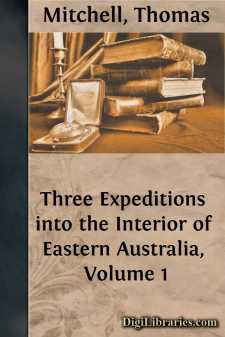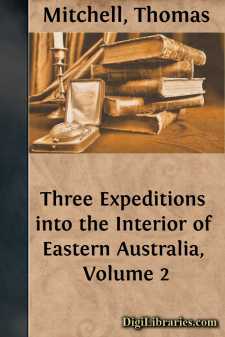Categories
- Antiques & Collectibles 13
- Architecture 36
- Art 48
- Bibles 22
- Biography & Autobiography 813
- Body, Mind & Spirit 142
- Business & Economics 28
- Children's Books 16
- Children's Fiction 13
- Computers 4
- Cooking 94
- Crafts & Hobbies 4
- Drama 346
- Education 46
- Family & Relationships 57
- Fiction 11829
- Games 19
- Gardening 17
- Health & Fitness 34
- History 1377
- House & Home 1
- Humor 147
- Juvenile Fiction 1873
- Juvenile Nonfiction 202
- Language Arts & Disciplines 88
- Law 16
- Literary Collections 686
- Literary Criticism 179
- Mathematics 13
- Medical 41
- Music 40
- Nature 179
- Non-Classifiable 1768
- Performing Arts 7
- Periodicals 1453
- Philosophy 64
- Photography 2
- Poetry 896
- Political Science 203
- Psychology 42
- Reference 154
- Religion 513
- Science 126
- Self-Help 84
- Social Science 81
- Sports & Recreation 34
- Study Aids 3
- Technology & Engineering 59
- Transportation 23
- Travel 463
- True Crime 29
Journal of an Expedition into the Interior of Tropical Australia
by: Thomas Mitchell
Description:
Excerpt
The exploration of Northern Australia, which formed the object of my first journey in 1831, has, consistently with the views I have always entertained on the subject [* See London Geographical Journal, vol. vii. part 2, p. 282.], been found equally essential in 1846 to the full development of the geographical resources of New South Wales. The same direction indicated on Mr. Arrowsmith's map, published by the Royal Geographical Society in 1837, was, in 1846, considered, by a committee of the Legislative Council of New South Wales, the most desirable to pursue at a time when every plan likely to relieve the colony from distress found favour with the public.
At no great distance lay India and China, and still nearer, the rich islands of the Indian Archipelago; all well-peopled countries, while the industrious and enterprising colonists of the South were unable to avail themselves of the exuberance of the soil and its productions,
"Which mock'd their scant manurings,and requir'dmore hands than theirsto prune their wanton growth."
The same attraction which drew the greatest of discoverers westward, "al nacimiento de la especeria [* To the region where spices grew.]," seemed to invite the Australian explorer northward; impelled by the wayward fortunes of the Anglo-Saxon race already rooted at the southern extremity of the land whose name had previously been "Terra Australis incognita." The character of the interior of that country still remained unknown, the largest portion of earth as yet unexplored. For the mere exploration, the colonists of New South Wales might not have been very anxious just at that time, but when the object of acquiring geographical knowledge could be combined with that of exploring a route towards the nearest part of the Indian Ocean, westward of a dangerous strait, it was easy to awaken the attention of the Australian public to the importance of such an enterprise. A trade in horses required to remount the Indian cavalry had commenced, and the disadvantageous navigation of Torres Straits had been injurious to it: that drawback was to be avoided by any overland route from Sydney to the head of the Gulf of Carpentaria.
But other considerations, not less important to the colonists of New South Wales, made it very desirable that a way should be opened to the shores of the Indian Ocean. That sea was already connected with England by steam navigation, and to render it accessible to Sydney by land, was an object in itself worthy of an exploratory expedition. In short, the commencement of such a journey seemed the first step in the direct road home to England, for it was not to be doubted that on the discovery of a good overland route between Sydney and the head of the Gulf of Carpentaria, a line of steam communication would thereupon be introduced from that point to meet the English line at Singapore.
In this view of the subject, it seemed more desirable to open a way to the head of the Gulf of Carpentaria, the nearest part of the sea, than to the settlement at Port Essington, on a presque-île forming the furthest point of the land; and, that the journey would terminate at the Gulf was therefore most probable. The map of Australia, when compared with that of the world, suggested reasonable grounds for believing that a considerable river would be found to lead to the Gulf of Carpentaria.
My department having been reduced to a state of inactivity in 1843, I submitted a plan of exploration to Sir George Gipps, the Governor, when His Excellency promised, that if the Legislative Council made such reductions as they seemed disposed to make in the public expenditure, he should be able to spare money for such an expedition....




